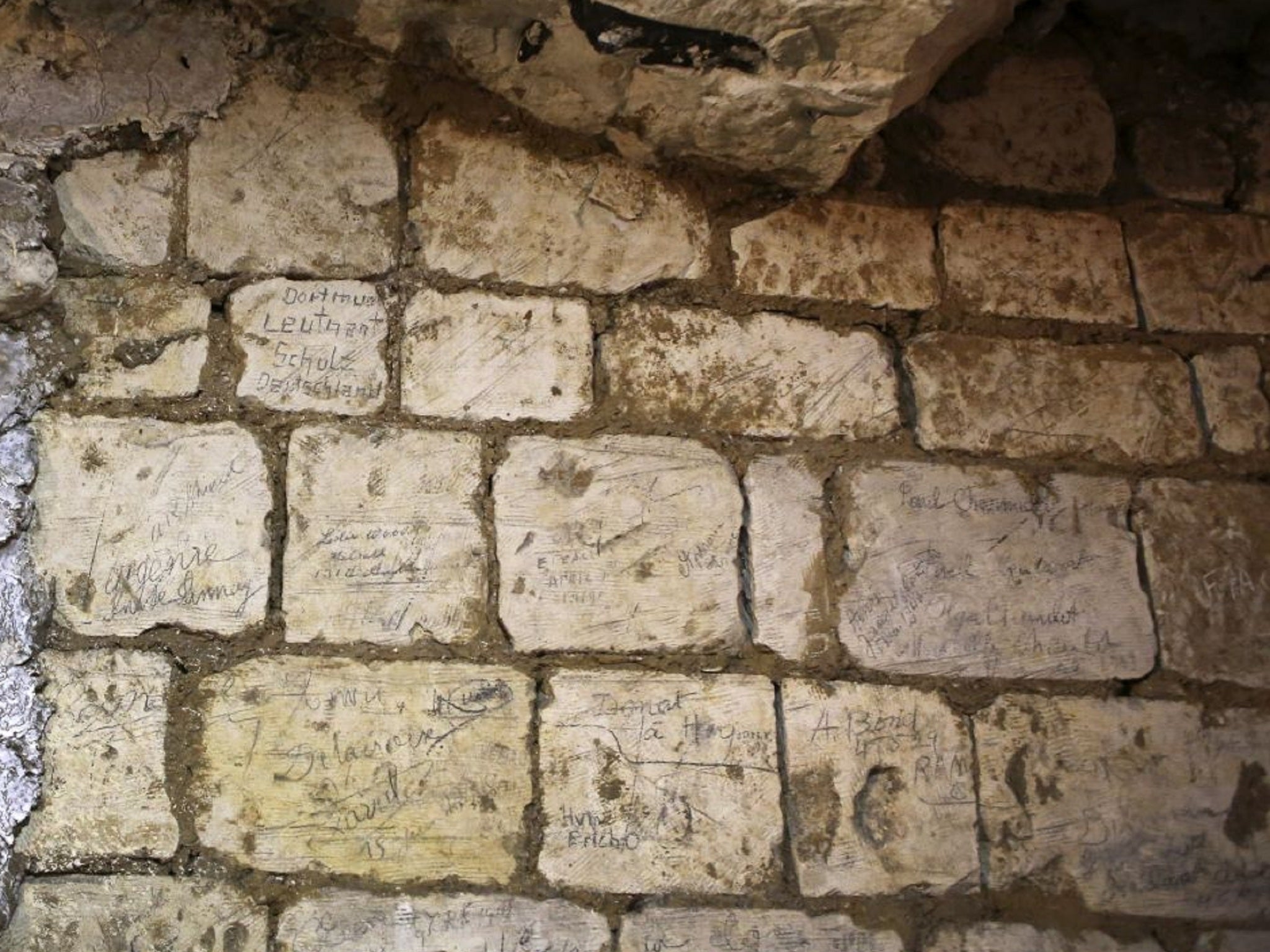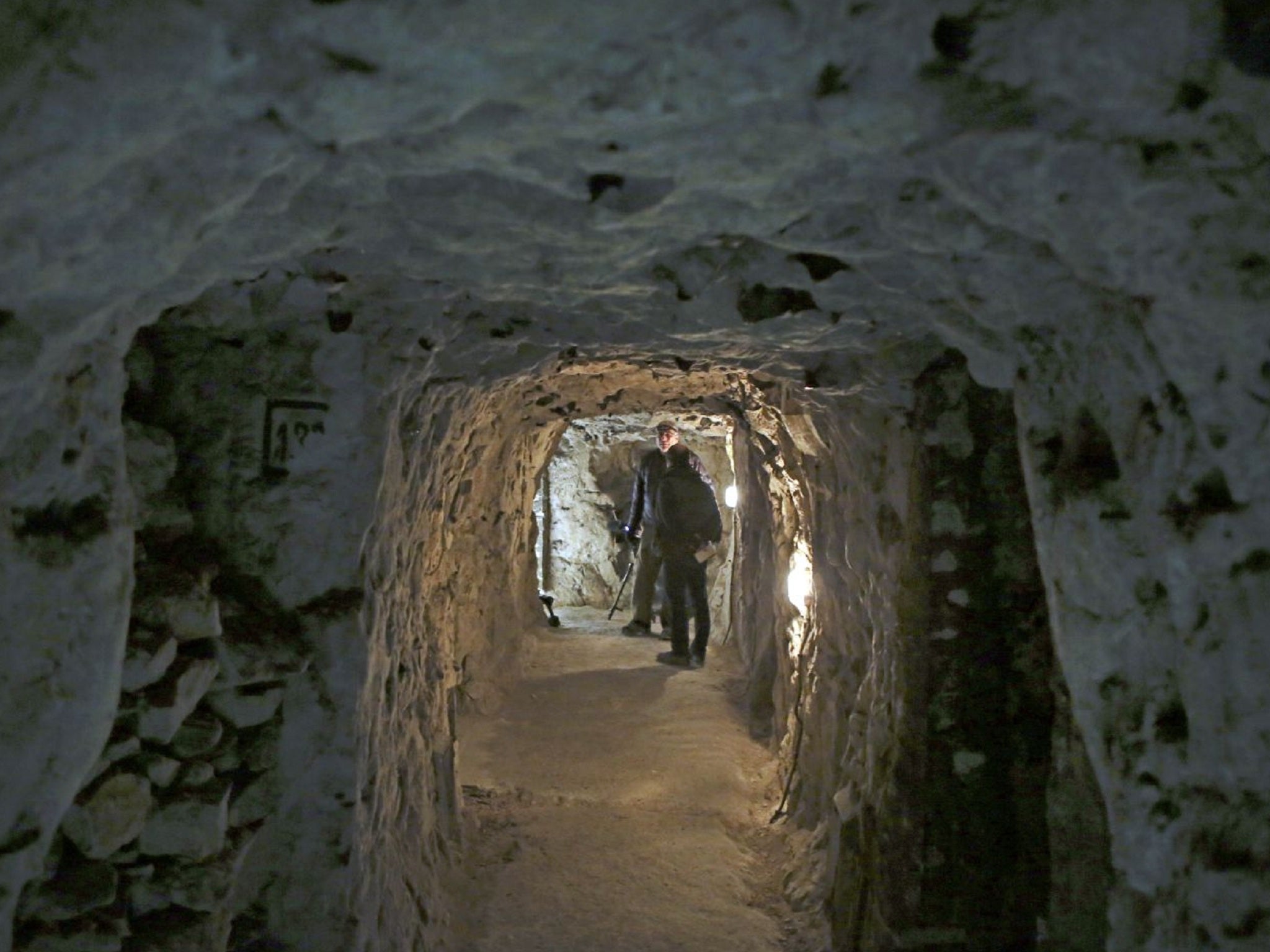Underground WWI graffiti shows nearly 2,000 soldiers' names inside former quarry in France
The names of 339 British soldiers were also discovered

Your support helps us to tell the story
From reproductive rights to climate change to Big Tech, The Independent is on the ground when the story is developing. Whether it's investigating the financials of Elon Musk's pro-Trump PAC or producing our latest documentary, 'The A Word', which shines a light on the American women fighting for reproductive rights, we know how important it is to parse out the facts from the messaging.
At such a critical moment in US history, we need reporters on the ground. Your donation allows us to keep sending journalists to speak to both sides of the story.
The Independent is trusted by Americans across the entire political spectrum. And unlike many other quality news outlets, we choose not to lock Americans out of our reporting and analysis with paywalls. We believe quality journalism should be available to everyone, paid for by those who can afford it.
Your support makes all the difference.Graffiti made up of nearly 2,000 First World War soldiers’ names – believed to be the biggest collection in the whole of Western Europe – has been found in the depths of a former chalk quarry in France.
The writing on the walls date back from around 1917 and are located in Naours, around 96 miles (156km) north of Paris, where millions of men lost their lives or were wounded on the nearby Somme battlefields.
Experts believe that the well-preserved graffiti shows how soldiers understood that leaving inscriptions around 100 feet underground, away from weather and footfall, would be beneficial for future generations to find.
“It shows how soldiers form a sense of place and an understanding of their role in a harsh and hostile environment,” said historian Ross Wilson of Chichester University in Britain.
There are 1,821 individual names of 731 Australians, 339 British, 55 Americans, a handful of French and Canadians and 662 others whose nationalities have yet to be traced. The names were tallied by photographer Jeff Gusky.
“All these guys wanted was to be remembered,” Gusky said.
One of the most moving inscriptions was made by Herbert John Leach, a 25-year-old from Adelaide. His inscription reads: “HJ Leach. Merely a private. 13/7/16. SA Australia.”

Less than a month after Leach added his name to the wall he was killed during the Battle of Pozieres on 23 August 1916.
Another writing simply says: “James Cockburn 8th Durham L.I.”
The long two mile (three kilometre) network of tunnels and hundreds of chambers were dug out over centuries in the chalky Picardy plateau.

Villagers took shelter there during the Middle Ages from armies crisscrossing northern France. By the 18th century the entrance of the quarry was blocked off and forgotten.
A local priest rediscovered the site in 1887 and it then became a tourist attraction – which would have drew the soliders to it during the war, according to French archaeologist Gilles Prilaux who found the graffiti.
“It was a big surprise,” Prilaux said.
Join our commenting forum
Join thought-provoking conversations, follow other Independent readers and see their replies
Comments